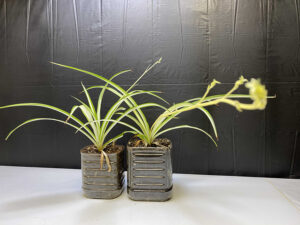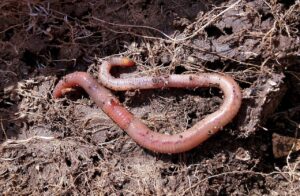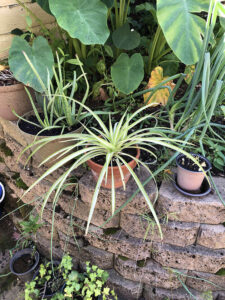SPIDER PLANT CARE AND BENEFITS

Could you think of better species than spider plant when coming to addition of texture and greenery indoor? I am certain that its rare to your mind. Although many cultivators, decorators and plant lovers consider this species as “easy to spread species” but you might fail to maintain this species without proper care. Hence, are they really easy to maintain, and do they provide us undeniable benefits?
Let’s explore some facts on spider plant (preferable species) and learn how to establish them successfully for extracting its benefits to a greater extent.
INTRODUCTION
Spider plant is an ornamental indoor plant. This plant produces oxygen whilst purifying the air in your home and your office. Spider plants absorb very harmful chemical like carbon monoxide, Formaldehyde which are considered as causative agents of cancer. Spider plant typically grows from mother plant and hangs down like a spider web, hence called the spider plant (spider like appearance).
Botanical Name: Chlorophytum Species
Spider plants have different names: Airplane plant, St. Bernard’s Lily, Spider Ivy, Ribbon plant, hens and chicken. So, don’t get confused if someone calls Spider plant otherwise.


TYPES OF SPIDER PLANT
There are almost 200 types of spider plants around the world. However, there are some common types of Spider plants. Following are the most common types of Spider plants:
- VARIEGATED SPIDER PLANT (Chlorophytum comosum ‘Vittatum’):
This is the most common type of Spider plant. It has broad white stripe and slightly curved leaves with medium green color. This type is best suitable for spacious rooms and balcony.
- BONNIE SPIDER PLANT (Chlorophytum comosum):
This also looks similar to Variegated Spider plant. The only difference is that the leaves are more curved in this type. This type is best suitable for small rooms like bathrooms.
- ZEBRA SPIDER PLANT (Chlorophytum laxum):
This plant has yellow edge that turns into white after some time being. This plant looks good in small hanging type of pots. If you are a beginner then you can consider getting this type.
- VARIEGATUM SPIDER PLANT (Chlorophytum comosum or Reverse Variegated):
This plant has arching leaves with white edge and dark green stripes in the center. You should place this type in bright sunlight to obtain its amazing color. This type is best for outdoors.
- HAWAIIAN SPIDER PLANT (Chlorophytum viridescens):
This type is the best-looking one. It is also known as Golden Glow. These are small with green leaves. This is perfect for living room.
BENEFITS OF SPIDERPLANT
- Decoration: Heavenly architectural beauty of this indoor plant can’t be ignored. This species add greater beauty to your landscape or home and offices.
- Easy To Care: Spider plants are easy to grow because it can adapt to various climate conditions. This plant could grow on both direct and indirect sunlight. But, it has been evident to do well under indirect sunlight. So, recommended to keep under indirect sunlight near the window.
- Non-Toxic: Getting a houseplant is no joke. While getting a house plant we need to think twice about our young children and pets as well. Spider plant is safe for pets but, need to be careful to protect pets from upset stomach which might happen due to indigestible chemical compound.
- Good for Health and Recovery: Spider plant is proven to be beneficial for speed patient recovery. Some studies had reflected that the recovery rate of patients having surgeries were faster in room with spider plant as compared to those without spider plant. Besides these, it also reduces certain health-related problems such as blood pressure or heart rate issues, anxiety or depression.
- Air Purifier: This natural air purifier is considered very good to purify air. According to NASA report; this species is effective for removing harmful chemicals such as Carbon monoxide, Xylene, formaldehyde and toluene from the air. Formaldehyde is the one found mostly in household products like wooden goods, plastic products, pesticides leather good and clothes.
- Good For Cold and Cough: Spider plant absorbs water through its root and circulates through its stems and leaves. When water reaches the leaves; it will evaporate & increase the humidity. The increased humidity decreases the airborne disease like cold, cough, sore throat and flu.
HOW TO ENSURE SUCCESSFUL ESTABLISHMENT (MAINTENANCE) OF SPIDER PLANT
- Select rich well-drained soil or potting (growing) medium.
- Moderate shade is preferred with indirect light.
- Maintain temperature between 10 °C to 27 °C.
- Water in regular intervals of 4-5days to maintain the soil moist. .
- Keep soil moist but not water-logged (water your plant if top 2.5 cm of soil seems dry and check it pressing your finger on soil).
- During spring and summer; fertilize these plants 2 times per month (liquid fertilizers are preferred). Avoid fertilization during winter.
- Transplant it as soon as its size outgrows container.
- Trim dead leaves and tips by scissors (it prevents from fungal and bacterial infection).
- Use natural insecticide like neem oil to get rid of spider mites.
- Faded leaves and stem could be healed by reducing sun exposure.
HOW TO GROW YOUR SPIDER PLANT
Spider plant is one of the easiest indoor plant for your home or your office.
The mixture of soil for the Spider plant should consist of 60% garden soil, 20% vermin compost and 20% sand.


Spider plant grows from mother plant like an extra branch. This next stems or baby plants can be taken out from or separated, and transfer to another pot. Remember! Repotting is very important for growing a healthy plant.

 Baby plants with roots.
Baby plants with roots.
This plant requires less care and can grow really well. It can be grown in any ordinary plastic bottle or pot with ordinary soil.
 Well developed roots in the small plastic pot
Well developed roots in the small plastic pot

 Spider plant in plastic bottle with ordinary garden soil.
Spider plant in plastic bottle with ordinary garden soil.
Not any difference in result was observed with both expensive soil and ordinary soil.
In case, of hot and dry weather, you need to spray water every day. But usually, you can water in the pot once/ twice a week.

Indirect bright sunlight such as using curtain in window is best for Spider plant. If you are growing your spider plant in a pot then make sure you are using a deeper pot. We can also keep the plant in a hanging basket or in the ground as well.

 Spider 🕷 plant In it’s full growth in shaded area of garden.
Spider 🕷 plant In it’s full growth in shaded area of garden.
Repotting is a must for proper growth and development. If size of spider plant overgrows container repot it on another pot.
 Repotted plants.
Repotted plants.
TIPS FOR REPOTTING YOUR SPIDER PLANT
- Once the pot becomes full, you can separate the baby plants (also known as “pups”) from the pot and plant them in another pot.
- When you transfer plant from smaller to larger pots; make sure the larger pots have good drainage hole (as it could not tolerate wet condition).
- Some healthy mother spider plant can produce pups that hang down. You can repot them as well.
- While repotting these pups you can replant them another pot next to the mother plant.
- When the pups will be rooted, you can simply cut the attached stem from mother plant.
SOME EXTRA POINTS TO REMEMBER
- Do not overwater your spider plant. Watering twice weekly is enough.
- Do not keep the spider plant under direct sunlight for more than 6 hours.
- Repotting your spider plant is a must.
- Notice for any fungal infections in your plants. Your plant will not grow properly and eventually die. So, remove this part to prevent further spreading.
- Adding coco pit in the soil mixture is very beneficial to your Spider plant.
CONCLUDING NOTE
- Easiest plant to grow as it takes minimal care.
- Natural air purifier that purifies toxins of your indoor surrounding.
- Packed with lots of health benefits.
- Instantly adds beauty to your office or room.
- Spider plant helps refresh your mood and increase your productivity.
- Spider plant can be an ideal gift for your loved ones as it produces lots of baby plants (pups).




excellent info on moringa plants, where can I purchase seeds to plant it?
The best place is amazon at your location. Try checking some agro stores around you. Let us know for more questions.
A very interesting article. I thought they were part of pilea peperomioids. These nasturtium grow like weeds where I live in southern part of South Africa. The only problems are snails. They are hardy and face drought conditions well. We don’t get frost. I love them xx
Thank you for your comment. I really appreciate it. Please be with us and help us share with your friends and family.
You are so right about choosing well drained soil for planting the grapes. It worked great when we tried.
Thank you for your comment. We appreciate it.